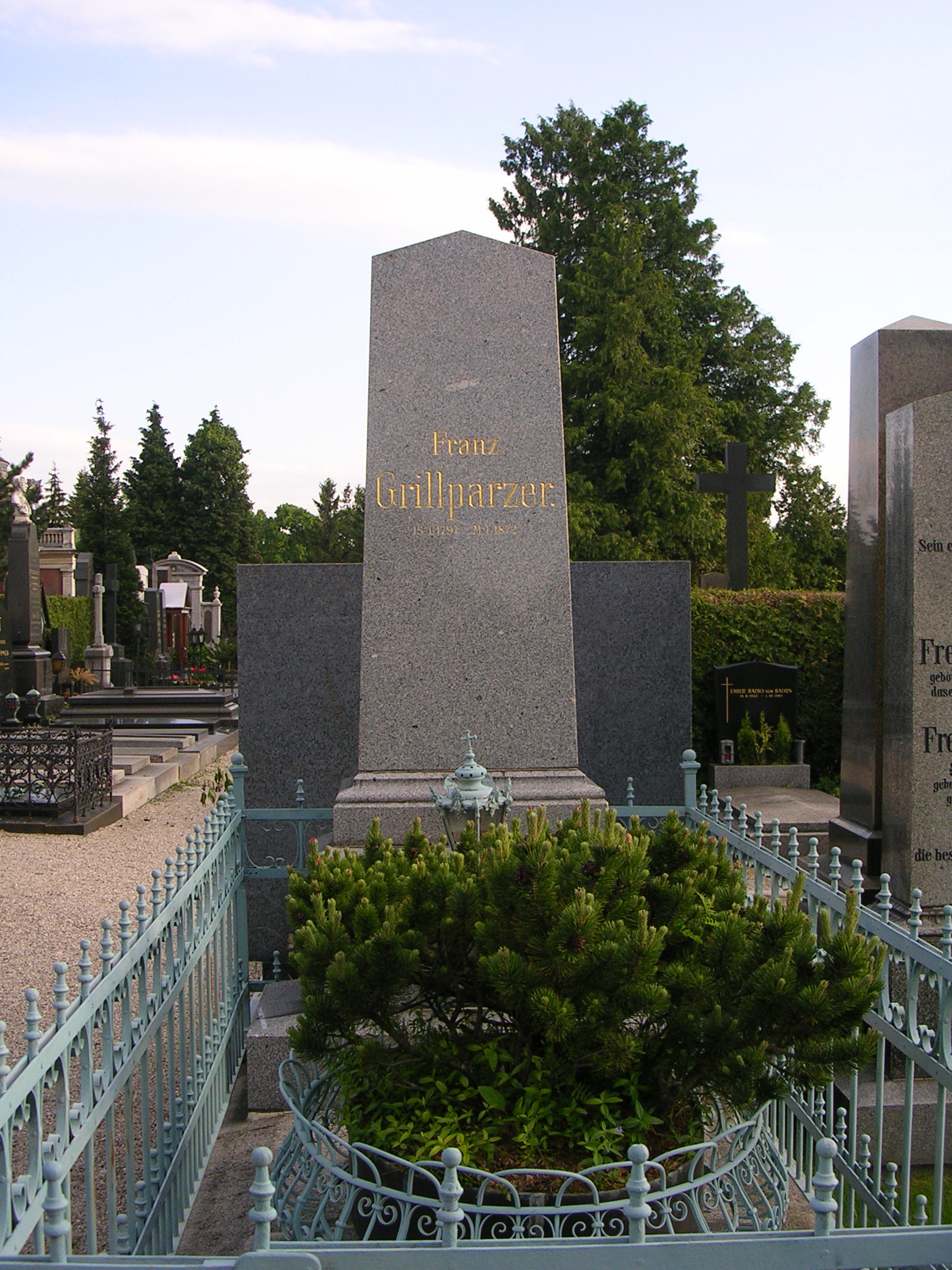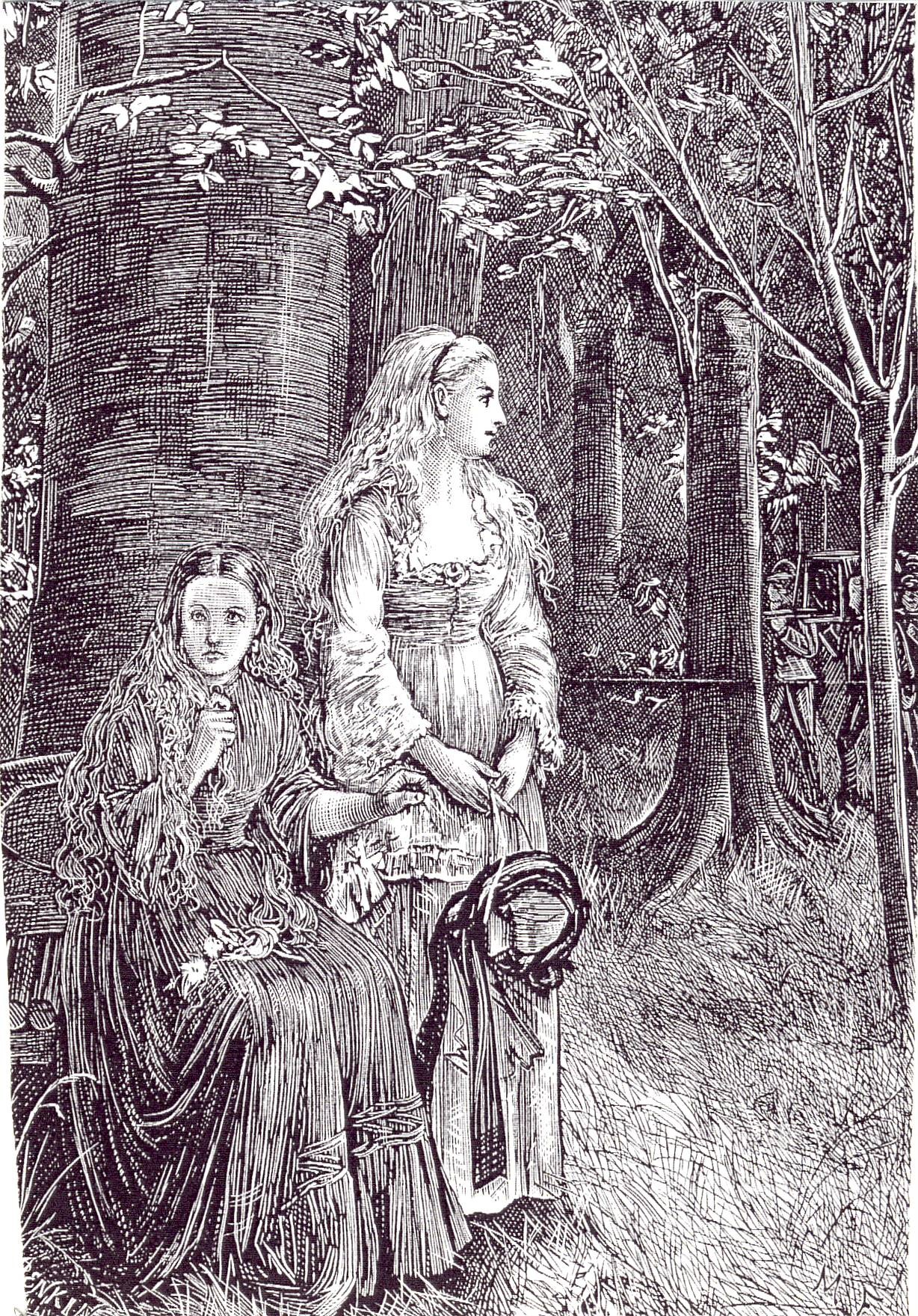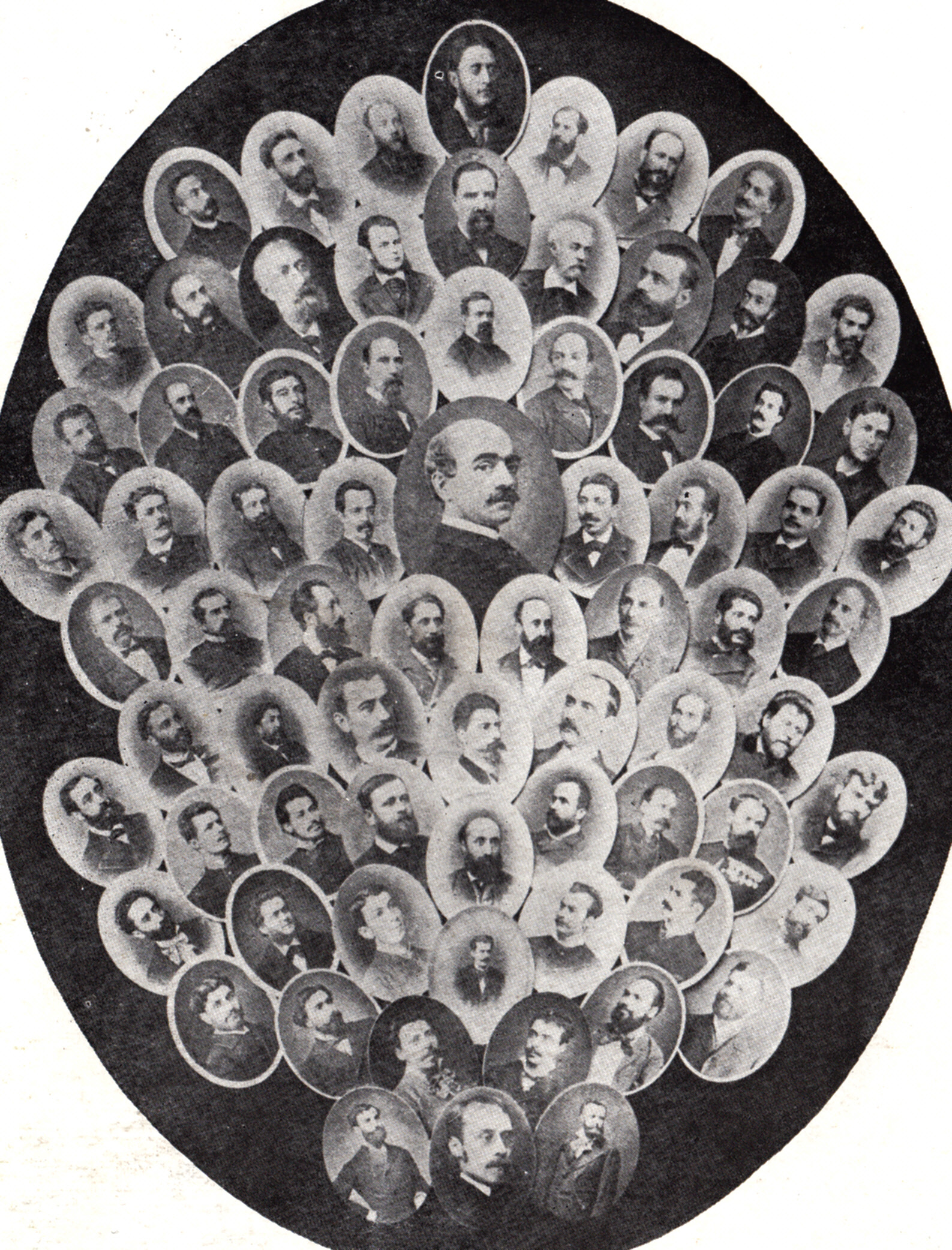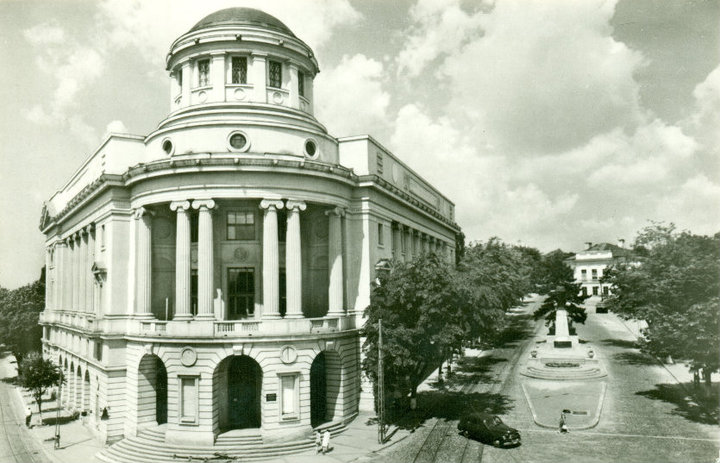|
1872 In Literature
This article contains information about the literary events and publications of 1872. Events *March **The Federation of Madrid expels Paul Lafargue and all other signatories to an ostensibly subversive article in ''La Emancipación''. **Serialisation of Sheridan Le Fanu's Gothic vampire novella '' Carmilla'' ends in the monthly ''The Dark Blue''. Later this year it appears in his collection ''In a Glass Darkly''. Set in the Duchy of Styria, it helps to introduce the lesbian vampire genre. *June 19 – The Bibliothèque nationale et universitaire is founded in Strasbourg as the ''Kaiserliche Universitäts- und Landesbibliothek zu Straßburg'', a public regional and academic library for the new German territory of Alsace-Lorraine (''Reichsland Elsass-Lothringen'') after destruction of its predecessors in the Siege of Strasbourg in the Franco-Prussian War. *July – Rose la Touche rejects a proposal from John Ruskin for the last time. *July 7 – Paul Verlaine abandons his fam ... [...More Info...] [...Related Items...] OR: [Wikipedia] [Google] [Baidu] |
Carmilla
''Carmilla'' is an 1872 Gothic fiction, Gothic novella by Irish author Sheridan Le Fanu and one of the early works of vampire fiction, predating Bram Stoker's ''Dracula'' (1897) by 26 years. First published as a Serial (literature), serial in ''The Dark Blue'' (1871–72), the story is narrated by a young woman preyed upon by a female vampire named Carmilla, later revealed to be Mircalla, Countess Karnstein (Carmilla is an anagram of Mircalla). The character is a prototypical example of the lesbian vampire, expressing romantic desires toward the protagonist. The novella notably never acknowledges homosexuality as an antagonistic trait, leaving it subtle and morally ambiguous. The story is often Anthology, anthologised, and has been adapted many times in film and other media. Publication ''Carmilla'', serialised in the literary magazine ''The Dark Blue'' in late 1871 and early 1872, was reprinted in Le Fanu's short-story collection ''In a Glass Darkly'' (1872). Comparing the work ... [...More Info...] [...Related Items...] OR: [Wikipedia] [Google] [Baidu] |
Rose La Touche
Rose La Touche (1848–1875) was the pupil, cherished student, "pet", and ideal on whom the English art historian John Ruskin based ''Sesame and Lilies'' (1865). Background Rose was born to John "The Master" La Touche (1814-1904), (of the Hugenout family which had settled in Ireland, and ran a bank), and his wife Maria La Touche, the only child of the Dowager Countess of Desart, County Kilkenny. The family lived in Harristown House, Co. Kildare. Introduction to John Ruskin Ruskin met La Touche on 3 January 1858, when she was 10 years old and he was about to turn 39. He was her private art tutor, and the two maintained an educational relationship through correspondence until she was 18. Rose's mother, Maria La Touche, had written to Ruskin for assistance with her children's education after a formal introduction from her friend Louisa Beresford, Marchioness of Waterford, Louisa, Lady Waterford. Ruskin recalls the correspondence in ''Praeterita'': Soon after I returned home, ... [...More Info...] [...Related Items...] OR: [Wikipedia] [Google] [Baidu] |
George MacDonald
George MacDonald (10 December 1824 – 18 September 1905) was a Scottish author, poet and Christian Congregational minister. He was a pioneering figure in the field of modern fantasy literature and the mentor of fellow writer Lewis Carroll. In addition to his fairy tales, MacDonald wrote several works of Christian theology, including several collections of sermons. His writings have been cited as a major literary influence by many notable authors including Lewis Carroll, W. H. Auden, David Lindsay, J. M. Barrie, Lord Dunsany, Elizabeth Yates, Oswald Chambers, Mark Twain, Hope Mirrlees, Robert E. Howard, L. Frank Baum, T. H. White, Richard Adams, Lloyd Alexander, Hilaire Belloc, G. K. Chesterton, Robert Hugh Benson, Dorothy Day, Thomas Merton, Fulton Sheen, Flannery O'Connor, Louis Pasteur, Simone Weil, Charles Maurras, Jacques Maritain, George Orwell, Aldous Huxley, Ray Bradbury, C. H. Douglas, C. S. Lewis, J. R. R. Tolkien, Walter de ... [...More Info...] [...Related Items...] OR: [Wikipedia] [Google] [Baidu] |
September 30
Events Pre-1600 * 489 – The Ostrogoths under Theoderic the Great defeat the forces of Odoacer for the second time. * 737 – The Turgesh drive back an Umayyad invasion of Khuttal, follow them south of the Oxus, and capture their baggage train. * 1139 – A magnitude 7.7 earthquake strikes the Caucasus mountains in the Seljuk Empire, causing mass destruction and killing up to 300,000 people. *1399 – Henry IV is proclaimed king of England. *1520 – Suleiman the Magnificent is proclaimed sultan of the Ottoman Empire. *1541 – Spanish conquistador Hernando de Soto and his forces enter Tula territory in present-day western Arkansas, encountering fierce resistance. *1551 – A coup by the military establishment of Japan's Ōuchi clan forces their lord to commit suicide, and their city is burned. 1601–1900 * 1744 – War of the Austrian Succession: France and Spain defeat Sardinia at the Battle of Madonna dell'Olmo, but soon have to withdra ... [...More Info...] [...Related Items...] OR: [Wikipedia] [Google] [Baidu] |
Poor Dionis
''Poor Dionis'' or ''Poor Dionysus'' ( ro, Sărmanul Dionis, originally spelled ''Sermanul Dionisie''; Valentin Coșereanu"Jurnalul Junimii" in ''Caiete Critice'', Issue 6/2010, p. 23 also translated as ''Wretched Dionysus'' or ''The Sorrowful Dionis'') is an 1872 prose work by Romanian poet Mihai Eminescu, classified by scholars as either a novel, a novella or a modern fairy tale. It is a liberal interpretation of contemporary German philosophy and ancient motifs, discussing themes such as time travel and reincarnation through the lens of post-Kantian idealism. Its eponymous central character, a daydreaming scholar, moves between selves over time and space, between his miserable home, his earlier existence as a monk in 15th-century Moldavia, and his higher-level existence as a celestial Zoroaster. ''Poor Dionis'' is one of the first, and most characteristic, works of fantasy in Romanian literature, and one of the poet's last Romantic texts. Beyond its philosophical vocabulary, t ... [...More Info...] [...Related Items...] OR: [Wikipedia] [Google] [Baidu] |
Iași
Iași ( , , ; also known by other alternative names), also referred to mostly historically as Jassy ( , ), is the second largest city in Romania and the seat of Iași County. Located in the historical region of Moldavia, it has traditionally been one of the leading centres of Romanian social, cultural, academic and artistic life. The city was the capital of the Principality of Moldavia from 1564 to 1859, then of the United Principalities from 1859 to 1862, and the capital of Romania from 1916 to 1918. Known as the Cultural Capital of Romania, Iași is a symbol of Romanian history. Historian Nicolae Iorga stated that "there should be no Romanian who does not know of it". Still referred to as "The Moldavian Capital", Iași is the main economic and business centre of Romania's Moldavian region. In December 2018, Iași was officially declared the Historical Capital of Romania. At the 2011 census, the city-proper had a population of 290,422 (making it the fourth most populous in ... [...More Info...] [...Related Items...] OR: [Wikipedia] [Google] [Baidu] |
Junimea
''Junimea'' was a Romanian literary society founded in Iași in 1863, through the initiative of several foreign-educated personalities led by Titu Maiorescu, Petre P. Carp, Vasile Pogor, Theodor Rosetti and Iacob Negruzzi. The foremost personality and mentor of the society was Maiorescu, who, through the means of scientific papers and essays, helped establish the basis of the modern Romanian culture. Junimea was the most influential intellectual and political association from Romania in the 19th century. Beginnings In 1863, four years after the union of Moldavia and Wallachia (''see: United Principalities''), and after the moving of the capital to Bucharest, five enthusiastic young people who had just returned from their studies abroad created in Iaşi a society which wanted to stimulate the cultural life in the city. They chose the name "''Junimea''", a slightly antiquated Romanian word for "Youth". It is notable that four of the founders were part of the Romanian elite, the ... [...More Info...] [...Related Items...] OR: [Wikipedia] [Google] [Baidu] |
Mihai Eminescu
Mihai Eminescu (; born Mihail Eminovici; 15 January 1850 – 15 June 1889) was a Romanian Romantic poet from Moldavia, novelist, and journalist, generally regarded as the most famous and influential Romanian poet. Eminescu was an active member of the Junimea literary society and worked as an editor for the newspaper ''Timpul'' ("The Time"), the official newspaper of the Conservative Party (1880–1918). His poetry was first published when he was 16 and he went to Vienna, Austria to study when he was 19. The poet's manuscripts, containing 46 volumes and approximately 14,000 pages, were offered by Titu Maiorescu as a gift to the Romanian Academy during the meeting that was held on 25 January 1902. Notable works include '' Luceafărul'' (''The Vesper/The Evening Star/The Lucifer/The Daystar''), ''Odă în metru antic'' (''Ode in Ancient Meter''), and the five ''Letters'' (''Epistles/Satires''). In his poems, he frequently used metaphysical, mythological and historical subjects. H ... [...More Info...] [...Related Items...] OR: [Wikipedia] [Google] [Baidu] |
Old Style And New Style Dates
Old Style (O.S.) and New Style (N.S.) indicate dating systems before and after a calendar change, respectively. Usually, this is the change from the Julian calendar to the Gregorian calendar as enacted in various European countries between 1582 and 1923. In England, Wales, Ireland and Britain's American colonies, there were two calendar changes, both in 1752. The first adjusted the start of a new year from Lady Day (25 March) to 1 January (which Scotland had done from 1600), while the second discarded the Julian calendar in favour of the Gregorian calendar, removing 11 days from the September 1752 calendar to do so.Spathaky, MikOld Style and New Style Dates and the change to the Gregorian Calendar "Before 1752, parish registers, in addition to a new year heading after 24th March showing, for example '1733', had another heading at the end of the following December indicating '1733/4'. This showed where the Historical Year 1734 started even though the Civil Year 1733 continued u ... [...More Info...] [...Related Items...] OR: [Wikipedia] [Google] [Baidu] |
September 13
Events Pre-1600 * 585 BC – Lucius Tarquinius Priscus, king of Rome, celebrates a triumph for his victories over the Sabines, and the surrender of Collatia. *509 BC – The Temple of Jupiter Optimus Maximus on Rome's Capitoline Hill is dedicated on the ides of September. * 379 – Yax Nuun Ahiin I is crowned as 15th Ajaw of Tikal * 533 – Belisarius of the Byzantine Empire defeats Gelimer and the Vandals at the Battle of Ad Decimum, near Carthage, North Africa. *1229 – Ögedei Khan is proclaimed Khagan of the Mongol Empire in Kodoe Aral, Khentii: Mongolia. * 1437 – Battle of Tangier: a Portuguese expeditionary force initiates a failed attempt to seize the Moroccan citadel of Tangier. 1601–1900 * 1609 – Henry Hudson reaches the river that would later be named after him – the Hudson River. *1645 – Wars of the Three Kingdoms: Scottish Royalists are defeated by Covenanters at the Battle of Philiphaugh. * 1743 – Great Britai ... [...More Info...] [...Related Items...] OR: [Wikipedia] [Google] [Baidu] |
Arthur Rimbaud
Jean Nicolas Arthur Rimbaud (, ; 20 October 1854 – 10 November 1891) was a French poet known for his transgressive and surreal themes and for his influence on modern literature and arts, prefiguring surrealism. Born in Charleville, he started writing at a very young age and excelled as a student, but abandoned his formal education in his teenage years to run away to Paris amidst the Franco-Prussian War. During his late adolescence and early adulthood, he produced the bulk of his literary output. Rimbaud completely stopped writing literature at age 20 after assembling his last major work, ''Illuminations''. Rimbaud was a libertine and a restless soul, having engaged in a hectic, sometimes violent romantic relationship with fellow poet Paul Verlaine, which lasted nearly two years. After his retirement as a writer, he traveled extensively on three continents as a merchant and explorer until his death from cancer just after his thirty-seventh birthday. As a poet, Rimbaud is wel ... [...More Info...] [...Related Items...] OR: [Wikipedia] [Google] [Baidu] |
London
London is the capital and largest city of England and the United Kingdom, with a population of just under 9 million. It stands on the River Thames in south-east England at the head of a estuary down to the North Sea, and has been a major settlement for two millennia. The City of London, its ancient core and financial centre, was founded by the Romans as '' Londinium'' and retains its medieval boundaries.See also: Independent city § National capitals The City of Westminster, to the west of the City of London, has for centuries hosted the national government and parliament. Since the 19th century, the name "London" has also referred to the metropolis around this core, historically split between the counties of Middlesex, Essex, Surrey, Kent, and Hertfordshire, which largely comprises Greater London, governed by the Greater London Authority.The Greater London Authority consists of the Mayor of London and the London Assembly. The London Mayor is distinguished fr ... [...More Info...] [...Related Items...] OR: [Wikipedia] [Google] [Baidu] |







